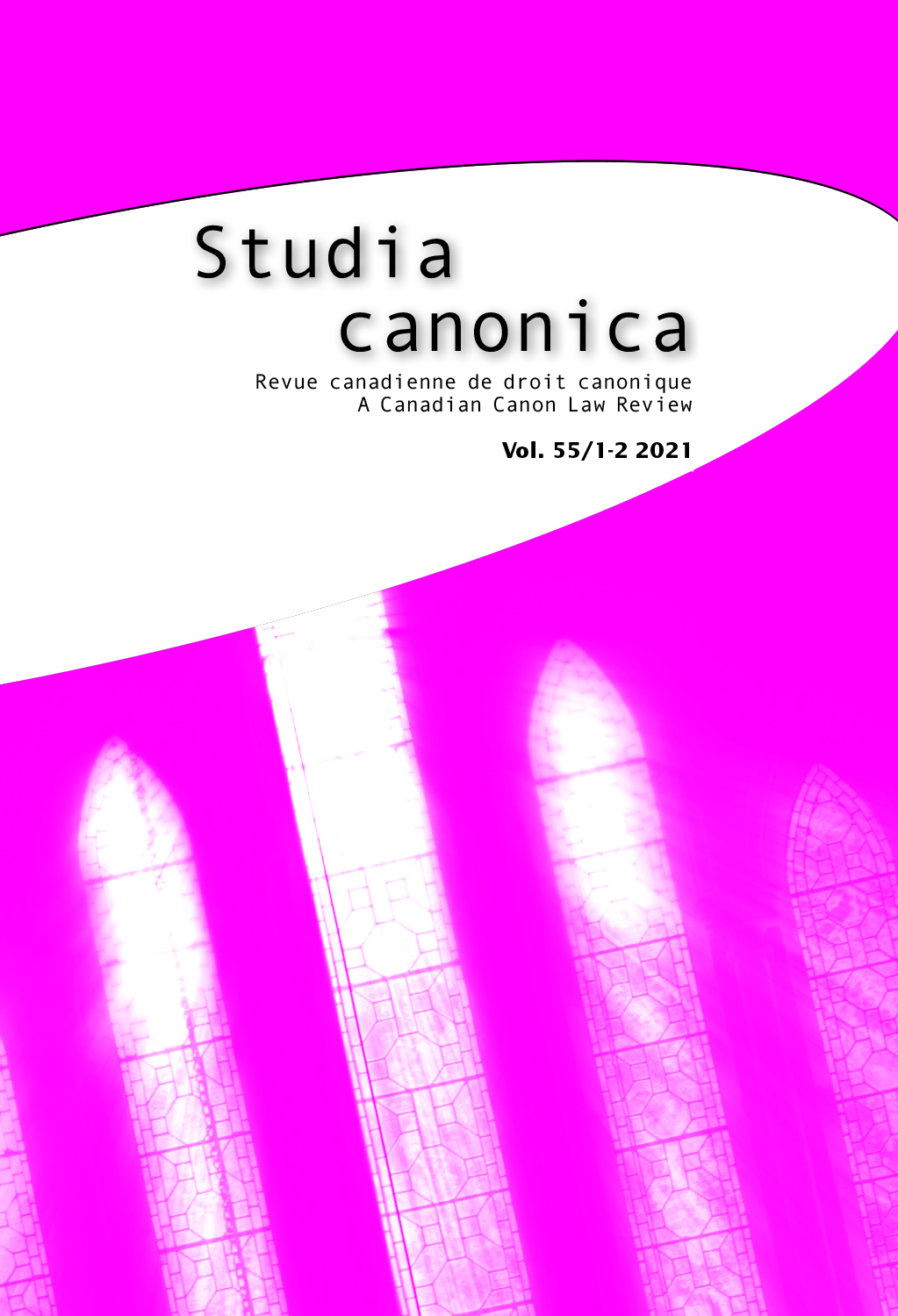 previous article in this issue previous article in this issue | next article in this issue  |

Preview first page |
Document Details : Title: The Evolution of the Theology of the Laity in the Work of Yves Congar, Karl Rahner, Hans Küng, and Edward Schillebeeckx Subtitle: Implications for Co-Responsibility in a Synodal Church Author(s): DE MEY, Peter Journal: Studia Canonica Volume: 58 Issue: 1 Date: 2024 Pages: 171-199 DOI: 10.2143/STC.58.1.3293402 Abstract : The first draft of the pre-conciliar De Ecclesia stressed the mutual relations between the laity and the ordained rather than their differences, while asserting the role of the laity in the Church and world in a chapter drafted by the Louvain peritus Gérard Philips. During the last revision of the chapter on the laity in Lumen gentium, the suggestion of Belgian Cardinal Suenens was accepted to grant the laity the possibility of assuming tasks of a spiritual nature in the Church. Some of these ideas were also found in publications on this theme that four Catholic theologians and Council periti – Yves Congar, Karl Rahner, Hans Küng, and Edward Schillebeeckx – had written since the 1959 announcement of the Council. The theologies on the laity of Congar, Rahner, and Schillebeeckx definitely changed in this period. By 1962, Schillebeeckx had given up his initial conviction of a distinct mission of the laity and the ordained. Until 1966, Rahner defended his thesis of the unique secular orientation of the laity. Congar discovered only in 1971 that he had denied the laity any role at the level of the structure of the Church. From his 1962 book Structures of the Church forward, Küng defended the universal priesthood of all believers as a whole from the basic structure of the Church. Finally, following the synthesis report A Synodal Church in Mission of the first session of the Sixteenth Ordinary General Assembly of the Synod of Bishops from start to finish, I will highlight lines of thought that can be traced to the works of Congar, Rahner, Schillebeeckx, and Küng. La première version préconciliaire du De Ecclesia mettait l’accent sur les relations mutuelles entre laïcs et ordonnés plutôt que sur leurs différences, tout en affirmant le rôle des laïcs dans l’Église et dans le monde dans un chapitre rédigé par le peritus de Louvain Gérard Philips. Lors de la dernière révision du chapitre sur les laïcs dans Lumen gentium, la suggestion du cardinal belge Suenens a été acceptée pour accorder aux laïcs la possibilité d’assumer des tâches de nature spirituelle dans l’Église. Certaines de ces idées ont également été reprises dans les publications sur ce thème que quatre théologiens catholiques et periti du Concile – Yves Congar, Karl Rahner, Hans Küng et Edward Schillebeeckx – ont écrites depuis l’annonce du Concile en 1959. Les théologies sur les laïcs de Congar, Rahner et Schillebeeckx ont définitivement changé au cours de cette période. En 1962, Schillebeeckx avait abandonné sa conviction initiale d’une mission distincte des laïcs et des ordonnés. Jusqu’en 1966, Rahner a défendu sa thèse de l’orientation séculière unique des laïcs. Congar n’a découvert qu’en 1971 qu’il avait dénié aux laïcs tout rôle au niveau de la structure de l’Église. À partir de son livre Structures de l’Église, publié en 1962, Küng a défendu le sacerdoce universel de tous les croyants en tant qu’ensemble de la structure de base de l’Église. Enfin, en suivant de bout en bout le rapport de synthèse Rapport de synthèse Une Église synodale en mission de la première session de la seizième Assemblée générale ordinaire du Synode des évêques, je mettrai en lumière les lignes de pensée qui peuvent être rattachées aux travaux de Congar, Rahner, Schillebeeckx et Küng. |
|


